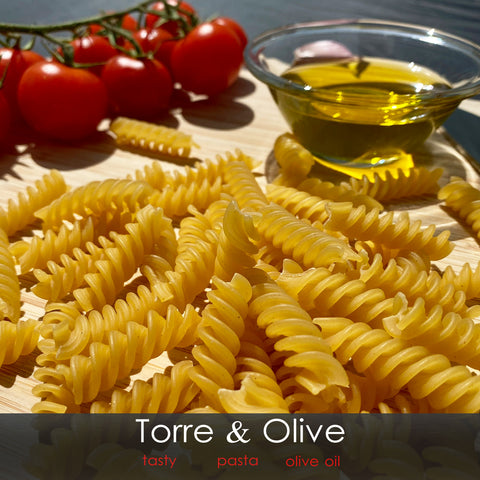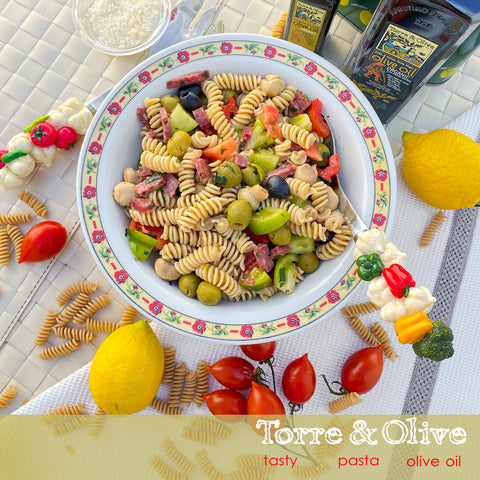How To Stop Pasta Sticking? In 5 Easy Steps!
How To Stop Pasta Sticking? In 5 Easy Steps!
How to stop pasta sticking? Yes, you are asking how because you want it to be presentable and delectable.
Sticking pasta is so yucky and messy to eat. The pasta should be in the right texture to make it yummy.
Al dente, that's what the Italian called. Meaning it is firmly cooked.
But how can you cook with that kind of texture? Here you will learn how to cook Al dente pasta. I will teach you the technique and tricks of cooking it.
You also need to know that there are do’s and don'ts in cooking pasta.
If you are not fond at cooking, at least you will be a good pasta chef.

Just continue reading, and you will discover all these things! So, let us start cooking!
Steps To Stop Pasta Sticking
Here are the steps on how to stop pasta sticking:
Step #1. Boiling point
Pasta is known everywhere, the easiest thing to prepare that will eventually make the empty stomach full.
Take your big pot, put water on it enough to cook your pasta.
Cooking pasta in a big pot is good because it gives enough space for the pasta, especially spaghetti noodles.
Make sure that all the noodles submerge from the water.
Water can evenly distribute the starchy content of noodles once you dump them in hot water.
Noodles need enough water because they absorb water during cooking.
Set your pot on fire, wait for the water to reach its boiling point, then add salt. Salt adds flavour to pasta but will not help them from sticking together.
Never add oil, as we frequently heard that oil prevents noodles from sticking together.
The truth is oil doesn't help at all. The worst thing is the noodles become slippery, which prevents thesauce from mixing with the noodles.
The sauce will end up at the bottom of your plate.

But if you are not mixing it with sauce and plan to serve later, you may put oil on to eliminate it fromsticking.
Take note of the do’s in oil.
You can use it by tossing it over your pasta and adding some other toppings of your choice but neveruse oil if you’re planning to use spaghetti sauce.
Step# 2. Stir your pasta
As you dump the pasta in boiling water, the first two minutes should be crucial. Stir it occasionally to avoid them from sticking together.
The package of pasta has recommended time in cooking, and you should be aware of it.
Never overcook your pasta more than the maximum time, for it will release much of the starch, and itwill end up sticking together.
You may taste your noodles if it is cooked.
The minute you dump in a pot of boiling water, leave it for two minutes. Then after two minutes, immediately stir it.
Stirring during cooking and at the end of cooking time will help the pasta not to stick.
This one is the best-recommended technique in cooking pasta without sticking. Never cut the pasta when dumping it in hot water.
It should be in full length and slowly push it down until all the length submerges in the water.
In this way, you will enjoy twirling the pasta when you eat.
Step #3. Rinse them up
When the pasta is done, you are now ready to take them off to the pot of boiling water.
To transfer cooked pasta to a container, you need first a strainer or a colander to drain the excess water.

Rinsing pasta with water makes the pasta cold and drain off the starch that sticks them together.
Then transferred it to a large container.
Step #4. Serving it
You can directly mix or tossed it into the sauce you prepared.
The sauce should be done first.
It should be served warm to enjoy the pasta's firmness and the excellent taste of the sauce.
A warm sauce can help loosen the pasta.
The pasta looks inviting and quite palatable.
Sticking pasta looks unpleasant to eat.
Even with how tasty your sauce is, the noodles' firmness gives a good presentation and a satisfying meal.
But if you’re planning to serve later or set aside for the next day, a drop of olive oil will do to avoidsticking up.
Never reheat the noodles by bringing them back to a boil but instead mix them with the hot sauce to prevent overcooked pasta.
Step #5. Reheating your pasta
You have leftover pasta or setting aside a bowl for tomorrow.
Never put noodles in hot water again.
This procedure will make pasta overcook and sticky.
Just mix the paste in a warm sauce. In that way, it will again loosen up.
One thing more, to preserve the freshness of your pasta, do not mix it all to the sauce. You cannot reheat it for the following day, and it will look clumpy.
You can keep your pasta 2-3 days in a fridge, provided it is well stored.
Now it's done! You already learned how to cook a firm pasta!
Before I end, I want to recommend Torre & Olive for quality extra virgin olive oil products.
Nevertheless, that is all.
Wrap It Up!
Already know how to stop pasta sticking? We hope we’ve added point to your knowledge!
Old wife’s story told you that adding oil and salt stops your pasta from not sticking together.
Now all is just old common mistakes that need to be corrected.
The do’s and don’ts of these will help you enjoy the perfect pasta and the technique is quite simple and very self-explanatory.
Remember those kinds of stuff, and your pasta will be the best pasta ever.
Pasta that is sticky, clumpy or mushy is not captivating to the eyes.
Delectable pasta should be firm and inviting.
Now that you knew how to cook good pasta, I’m pretty sure your family and friends will love it.
Take your time and enjoy every moment of cooking!
